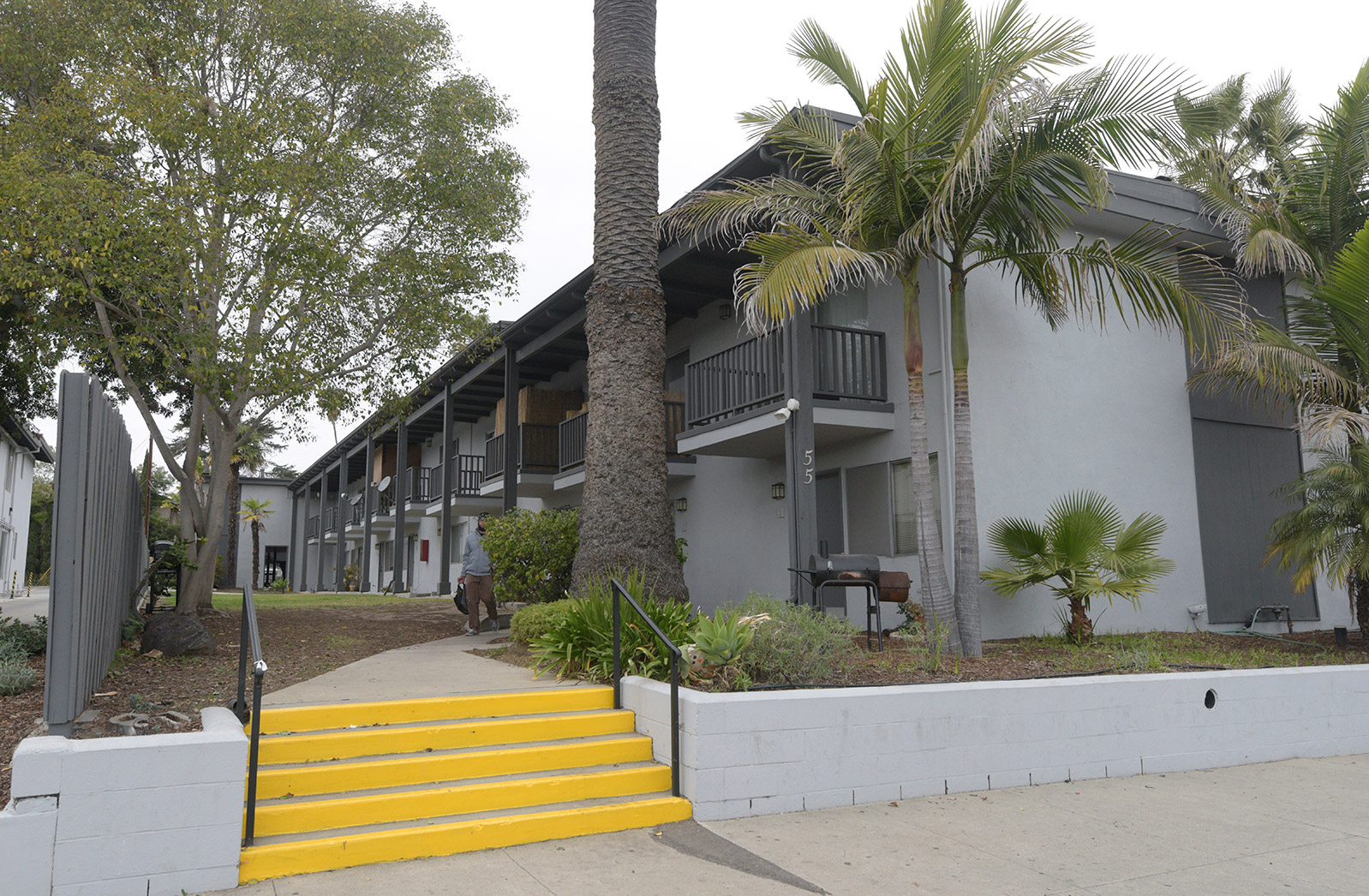Public and Private Forces Strain Santa Barbara’s Housing Market
Investors Hike Rents as the State Backs Granny Flats

Tenants at 55 Ocean View Avenue have seen it all. Twice in the past 17 months, their apartment building — a modest two-story complex populated by working families and a few retired teachers — has been “discovered” by real estate investors from Los Angeles. For the occupants, the results have been unsettling. “These investors from L.A. come up here, increase our rents, flip the property, and move on so the next group of investors can do the same,” said one tenant who insisted on anonymity. “These people come up here, buy it all up, and there’s nothing you can do about it,” said another.
It started in August 2016, when Xenon Investments — out of Los Angeles — bought the property for $3.7 million from the group of Glendale investors who bought it in 2005, chopped down more than 20 mature trees, power-washed the building, applied a new coat of paint, and installed laminate floors. In 14 months, Xenon increased rents no less than three times. Last November, Xenon sold to Ocean Ten LLC for $4.3 million. Ocean Ten, based in Torrance and Montecito and managed by Peter Bohlinger and Braden Bohlinger, immediately set out to further upgrade the building. Construction would begin in earnest; tenants were given 60 days’ notice. Rents would go up, reportedly to $3,000 a month for a two-bedroom unit. For one tenant, that would be a monthly increase of $1,000; for another, it would be closer to $600. The managers were not eager to talk.
In Santa Barbara’s cruel rental market, this is not news so much as it is background noise. Under existing rules and regulations, Ocean View tenants — some who’ve been there more than 20 years — are out of luck. Even if the City Council were to adopt tenant protections hatched by a task force of landlords and tenant advocates, they’d still be out of luck. One of those provisions would require landlords to pay tenants up to $5,000 in relocation assistance. But that applies only to complexes with 15 units or more. Another provision would require mediation over evictions like this. Another would require one-year leases. But this package is at least six months away from council cogitation, let alone adoption.
Tenant advocates like Frank Rodriguez — who sat on the task force from which these provisions emerged — insist what’s needed is a just-cause-eviction ordinance and will no doubt soon be lobbying City Council to enact just that. Rodriguez supports new rental housing development, but only if existing rental housing isn’t destroyed in the process. “Our mantra these days is ‘Development without displacement,’” said Rodriguez, a policy associate with the group CAUSE (Central Coast Alliance United for a Sustainable Economy). That, however, is a lot easier said than done.
In the meantime, City Hall is grappling with new state laws designed to encourage the development of new housing by limiting what restrictions local governments can impose. The biggest involves what used to be known as a granny flat and now goes by the term Accessory Dwelling Unit (ADU). For years, granny flats existed only as a theoretical possibility, rendered utterly unattainable by city guidelines. But last year, Governor Jerry Brown signed a bill taking most discretionary review of ADUs away from local governments. City planners responded by unveiling a proposed ordinance Tuesday that could allow as many as 11,000 new granny units to be developed pretty much everywhere within city limits except for high-fire-risk zones. No action was taken, but 90 minutes were spent in deliberation.
Still unclear is whether City Hall can require the new units to be owner occupied. The rationale for that is to discourage real estate investors from buying up single-family homes, converting them to duplexes with the addition of an ADU, and renting them out.
Proposed is a deed covenant stipulating that one of the two domiciles be occupied by the owner. But one would-be ADU builder said his bank told him he couldn’t get a loan if he signed such a covenant. Under the new rules, new ADUs would require no new parking spaces. Backyard open space requirements would be relaxed by 20 percent to accommodate the new structures. Permits will be obtained across the counter without any discretionary review. But that has drawbacks, as about eight neighbors of a two-story ADU proposed for the 800 block of De la Guerra Terrace attested. They were upset that the new structure was out of scale with their neighborhood; they were even more upset there was no requirement they be notified it was going up. They had no say.
To date, City Hall has received 304 applications for ADUs; 110 of which have been issued building permits or are about to be. Most — 76 percent — involved existing structures, like garages and workshops. Only 22 were the subject of prior zoning enforcement. By the time the council figures out what ordinance to pass, it’s possible the State Legislature will have adopted yet another ADU law, this one tying City Hall’s hands even more than the first.
Editor’s Note: This story was updated on March 15 to reflect that Braden and Peter Bohlinger, not Bryan Bohlinger, manage Ocean Ten.



